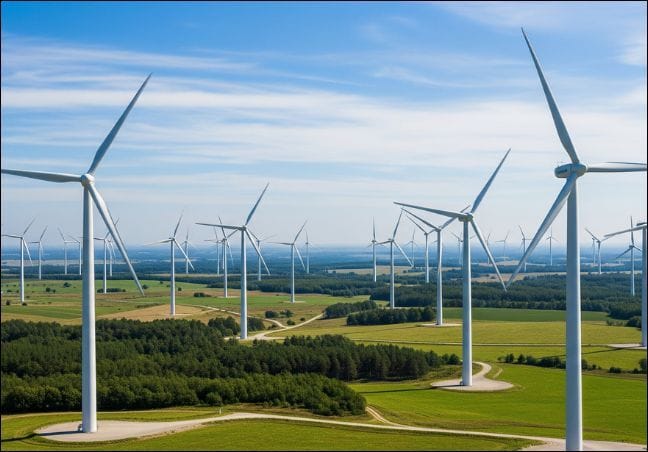- Hydrogen Rising
- Posts
- How renewables will shape Africa’s hydrogen future
How renewables will shape Africa’s hydrogen future

From the newsletter
A new report by the African Energy Chamber projects Africa’s renewable energy share will rise from 27% today to over 43% by 2030. This surge is set to provide the clean electricity foundation needed to scale green hydrogen production, positioning the continent as a credible global supplier,particularly to Europe.
Africa’s accelerating renewable buildout improves power availability and cost certainty, directly enhancing the viability and bankability of large-scale electrolysis projects.
The projected growth in solar, wind and hydro expands optionality for developers, enabling tailored hydrogen project configurations across diverse African geographies and industrial use cases.
More details
Published in July 2025, the State of African Energy: 2025 Outlook Report provides an in-depth analysis of the trends, challenges, and opportunities shaping Africa’s energy landscape, including the rising role of green hydrogen.
According to the report, the continent’s solar PV capacity is expected to surpass 20 GW in 2025, rising to nearly 90 GW by 2030. Wind capacity is projected to exceed 11 GW this year, reaching close to 50 GW by the end of the decade. Hydropower is also set to grow, from 47.5 GW currently to around 60 GW by 2030, driven by large-scale infrastructure developments already in the pipeline.
The report notes that Africa has approximately 500 GW of renewable energy capacity in the concept phase, with North Africa and South Africa accounting for more than 80% of this pipeline. Around 13 GW of utility-scale solar PV and wind projects are currently under construction, with South Africa, Egypt, Morocco, Ethiopia, and Algeria contributing over 75% of this capacity.
South Africa leads the continent in installed renewables, accounting for 41% of Africa’s solar PV and 34% of onshore wind capacity. The report highlights a significant rise in distributed energy systems, particularly rooftop solar, which doubled from 2.6 GW in 2022 to 5.2 GW in 2023, largely in response to persistent grid instability and load shedding.
Egypt follows closely, with several of Africa’s largest operational utility-scale projects, including the Benban solar complex and the Gabal El Zeit and Zaafarana wind farms. Morocco, a pioneer in both solar PV and concentrated solar power (CSP), previously hosted the world’s largest solar thermal facility at Noor Ouarzazate and is now expanding its renewable base to support hydrogen-linked projects and international export ventures.
Africa’s renewable energy trajectory is not just an enabler of green hydrogen, it will define where projects are feasible, how they are structured, and whether they are globally competitive. Hydrogen economics hinge on access to large volumes of low-cost, zero-carbon electricity. Thus, the projected expansion in solar PV, wind, and hydropower across Africa, directly influences where green hydrogen assets can be sited and how competitively they can operate.
Beyond geography, the structure of renewable deployment will shape how hydrogen ecosystems evolve. Markets investing in dispatchable renewables or hybridised portfolios are better placed to deliver the high electrolyser load factors needed for bankability. In contrast, countries adding variable renewables without addressing intermittency, through firming capacity, co-location, or long-duration storage, risk underutilised assets and suboptimal hydrogen output.
Reliability is now as critical as cost. In response, some developers are favouring behind-the-meter generation, particularly in markets where grid instability or curtailment risk undermines the viability of long-term power purchase agreements. These choices affect not only project cost structures but also the broader scalability of national hydrogen strategies. The trend reveals a deeper structural tension: renewable capacity alone is not enough. Without parallel investment in grid infrastructure and system flexibility, Africa’s expanding renewable base may struggle to support a scalable, interconnected hydrogen economy.
Timing is becoming a differentiator. Countries moving quickly on renewables, supported by credible procurement frameworks, transmission investment, and clear land access policies, are more likely to attract early hydrogen capital. OEMs, infrastructure investors, and trading partners increasingly view renewable deployment rates as a proxy for hydrogen readiness.
Conversely, where rollout is delayed by regulatory friction or grid bottlenecks, hydrogen ambitions will remain largely speculative. With Europe setting procurement timelines for green hydrogen imports, project delivery is now directly linked to renewable execution on the ground.
Crucially, renewable growth will also define Africa’s positioning in the global hydrogen value chain. Countries able to generate surplus clean electricity can participate in export markets or value-added derivatives such as ammonia and e-fuels. Others may focus on domestic hydrogen use for fertiliser, refining, or transport applications.
Renewable expansion patterns will thus influence whether countries emerge as exporters, regional suppliers, or internal adopters. In all cases, additionality will be scrutinised, particularly by EU buyers, making project certification and power sourcing strategy a core element of hydrogen market access.
Our take
Installed capacity matters, but strategic deployment will determine outcomes. Africa’s hydrogen future hinges on how reliably and affordably renewable power can support scalable electrolyser operations.
Renewables are no longer just the feedstock; they’re the design principle. The structure, location, and reliability of generation will shape Africa’s role in the global hydrogen economy.
The growing renewables base is a vital starting point for Africa’s green hydrogen ambitions, but it isn’t enough. Without deliberate investment in dedicated generation, infrastructure, and project integration, the sector risks stalling before it scales.